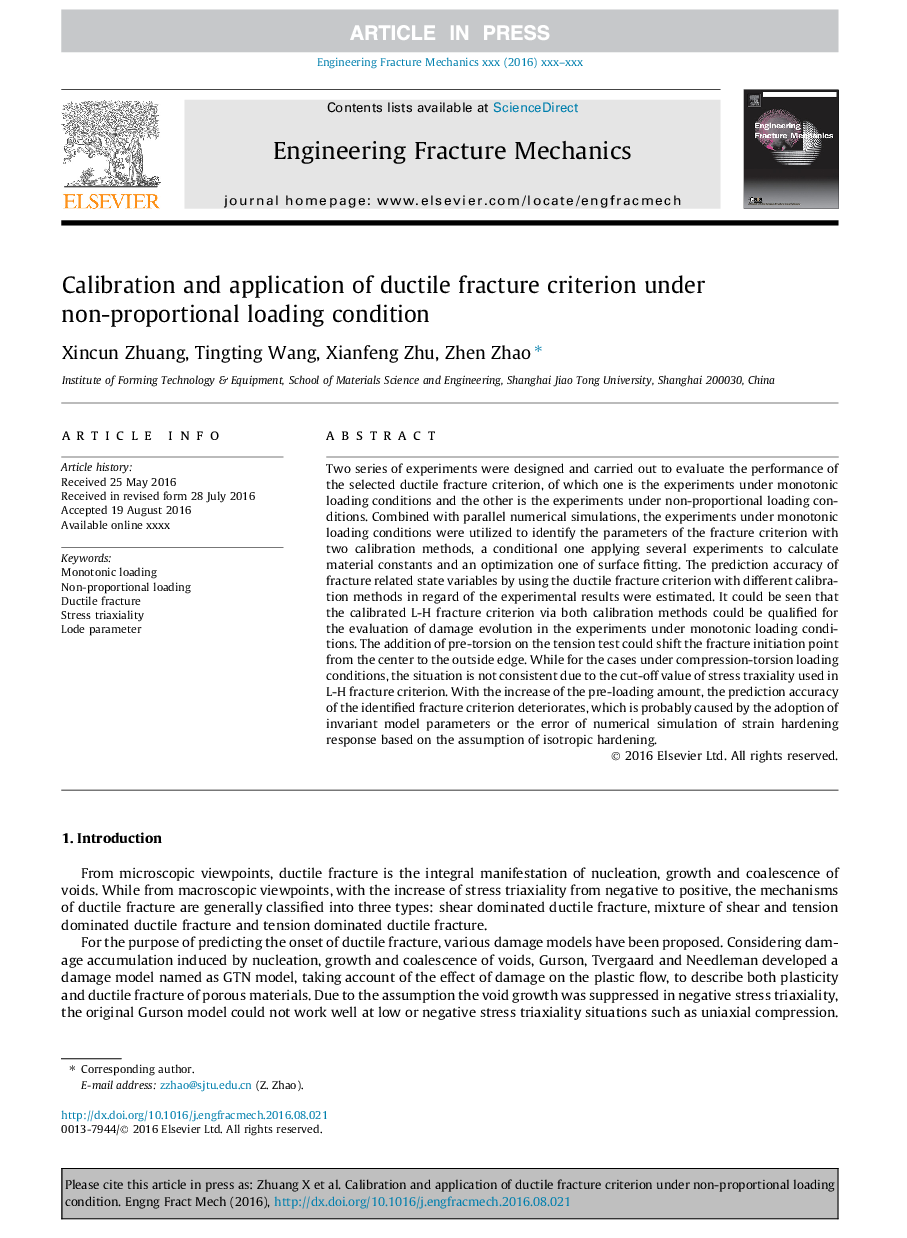| Article ID | Journal | Published Year | Pages | File Type |
|---|---|---|---|---|
| 5014157 | Engineering Fracture Mechanics | 2016 | 18 Pages |
Abstract
Two series of experiments were designed and carried out to evaluate the performance of the selected ductile fracture criterion, of which one is the experiments under monotonic loading conditions and the other is the experiments under non-proportional loading conditions. Combined with parallel numerical simulations, the experiments under monotonic loading conditions were utilized to identify the parameters of the fracture criterion with two calibration methods, a conditional one applying several experiments to calculate material constants and an optimization one of surface fitting. The prediction accuracy of fracture related state variables by using the ductile fracture criterion with different calibration methods in regard of the experimental results were estimated. It could be seen that the calibrated L-H fracture criterion via both calibration methods could be qualified for the evaluation of damage evolution in the experiments under monotonic loading conditions. The addition of pre-torsion on the tension test could shift the fracture initiation point from the center to the outside edge. While for the cases under compression-torsion loading conditions, the situation is not consistent due to the cut-off value of stress traxiality used in L-H fracture criterion. With the increase of the pre-loading amount, the prediction accuracy of the identified fracture criterion deteriorates, which is probably caused by the adoption of invariant model parameters or the error of numerical simulation of strain hardening response based on the assumption of isotropic hardening.
Related Topics
Physical Sciences and Engineering
Engineering
Mechanical Engineering
Authors
Xincun Zhuang, Tingting Wang, Xianfeng Zhu, Zhen Zhao,
